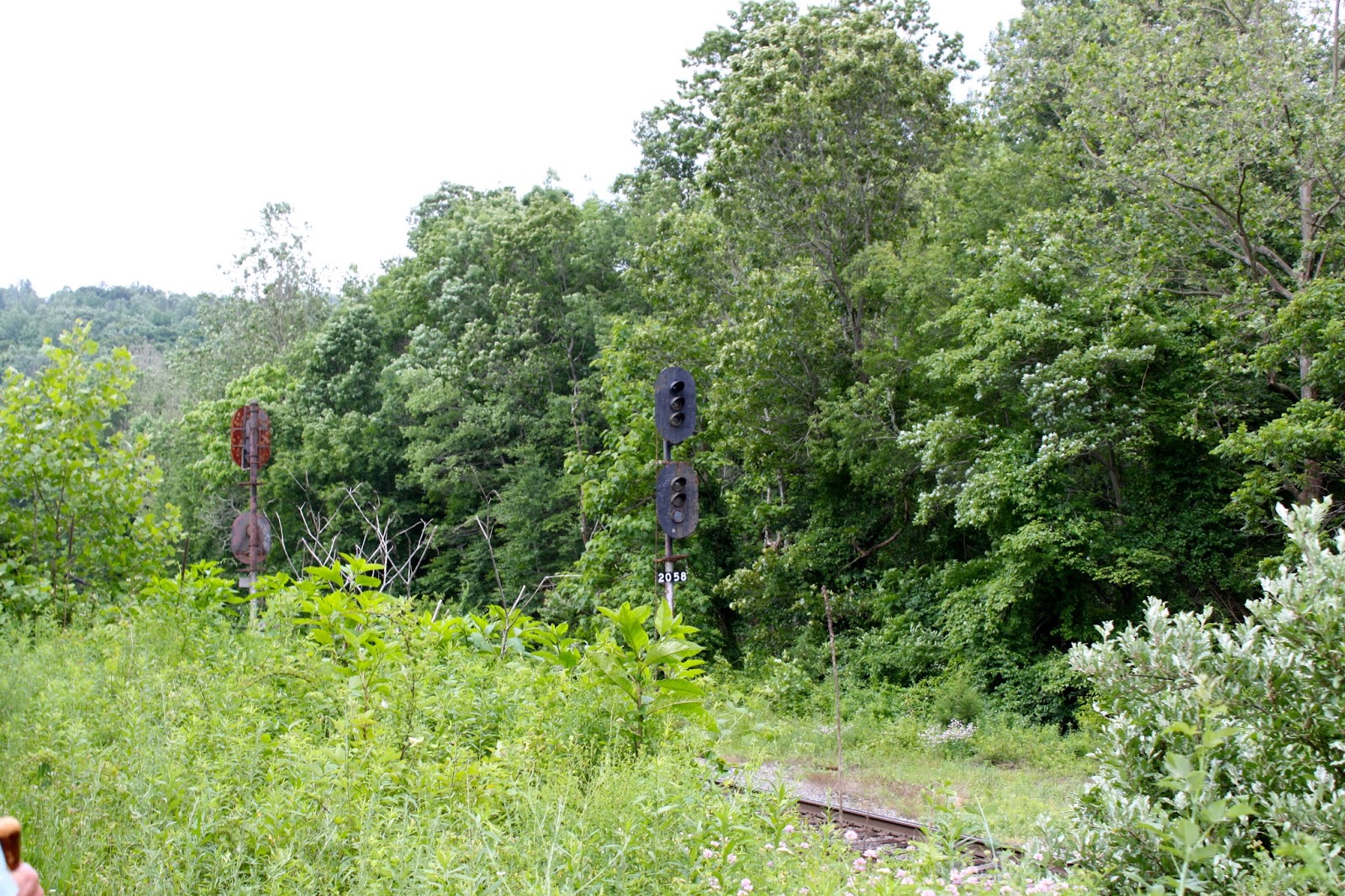This post is a little of the beaten path, literally. I decided to share one of my favorite experiences of the summer: the field trip to the Blue Ridge Railroad Tunnel. Over the summer, I am the graduate field director for an archaeology field school run through the University of Maryland. The archaeology field school focuses on sites associated with the Irish laborers who built the railroad tunnels through the Blue Ridge Mountains outside of Charlottesville, Virginia. And so once a summer, we go visit the longest and most impressive of those tunnels so that the students can get a better understanding of what the Irish laborers did.
So let the adventure begin!
Its a bit of a hike to get to the tunnel, which is owned by Nelson County and is private property (aka don't go there unless you have their permission).
A view of the modern tracks from a path along the historic rail-bed.
Sabrina makes sure we all make it to the tunnel.
There has been a lot of rain this summer, so the area is full of vegetation, which seems to make the approach to the tunnel even more magical, almost like a true trip through time.
Rhonda, one of the Clann Mhór community members, graciously agreed to be my scale in this photo. The marks in the rock behind her are testimonies to the labor it took to build this tunnel. Irish laborers used hand-turned drills to create openings in the rock, which were then packed with black powder, in order to blast the rock away.
And here's the tunnel!
At the time it was built it was the longest tunnel in the United States, at just over a mile in length. The tunnel was designed by Claudius Crozet, who was responsible for three other tunnels and a railroad cut in the area.
Sabrina was thrilled that she got to come!
More of the drill marks just outside the Tunnel's western portal.
When you enter the tunnel, you realize that it is lined with thousands of bricks. The bricks are mostly on the western section of the tunnel, in order to maintain the tunnel's structural integrity. They were made specifically for the tunnel from local clay.
As you walk further you go into the tunnel, you begin to notice the that the light begins to recede and the temperature drops significantly. It is picturesque, but also allows you to begin to imagine what it would have been like to have built this tunnel.
That is one of the main reasons that we take the field school students on this field trip, so that they can begin to better understand the daily lives of the Irish laborers'.
That and the torches of course. Who wouldn't want to play Indiana Jones for an hour or two?
As you continue into the tunnel, the bricks stop and the raw rock is exposed. It really is eye opening to imagine that all of this was carved out by hand (and took almost a decade to do so!).
As we turned to leave, we literally went towards the light at the end of the tunnel. It was amazing, coming out of the dark, smokey tunnel into the bright day light (the smoke is from the torches). Yet, we were lucky. Although it was dark, it was no where near as dark as it would have been for the Irish laborers; although it was smokey, it was not unbearable or unhealthy. Trips like these put labor history into a different perspective and allow students to grasp at some of the hardship the Irish immigrants would have endured.
I can't thank our tour guides (Dan, Rhonda, and Michael) enough! Clann Mhór has been so generous throughout this project and I appreciate all their work and enthusiasm.
And I want to reiterate that we were there with the permission of Nelson County, which is necessary in order to visit the tunnel.


















Wow, I would love to see that. It looks like such hard work and for a decade, amazing.
ReplyDelete